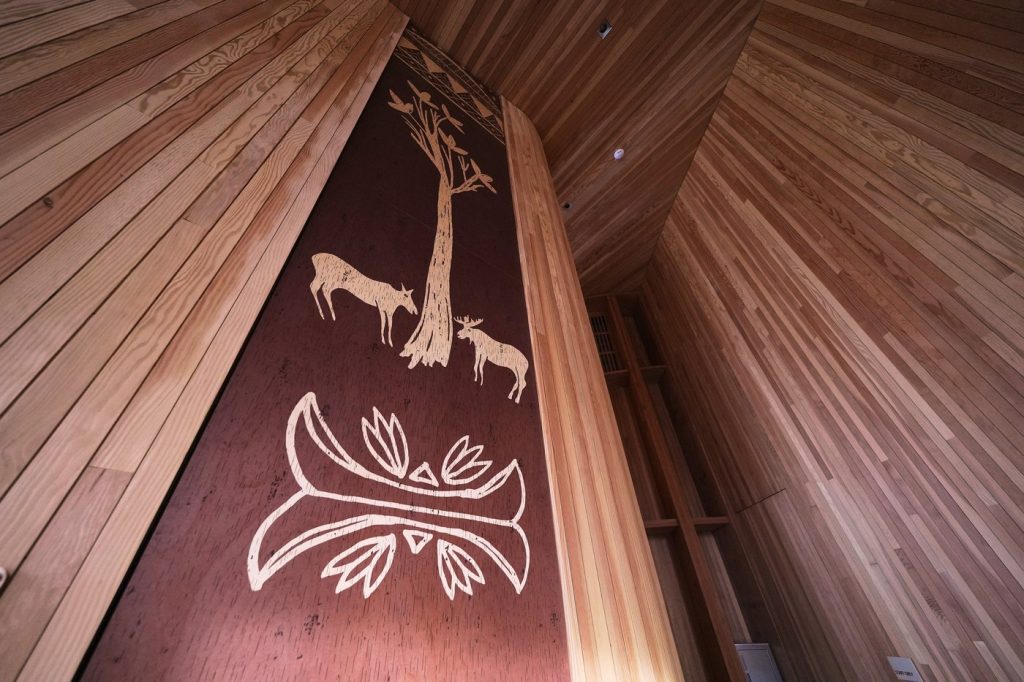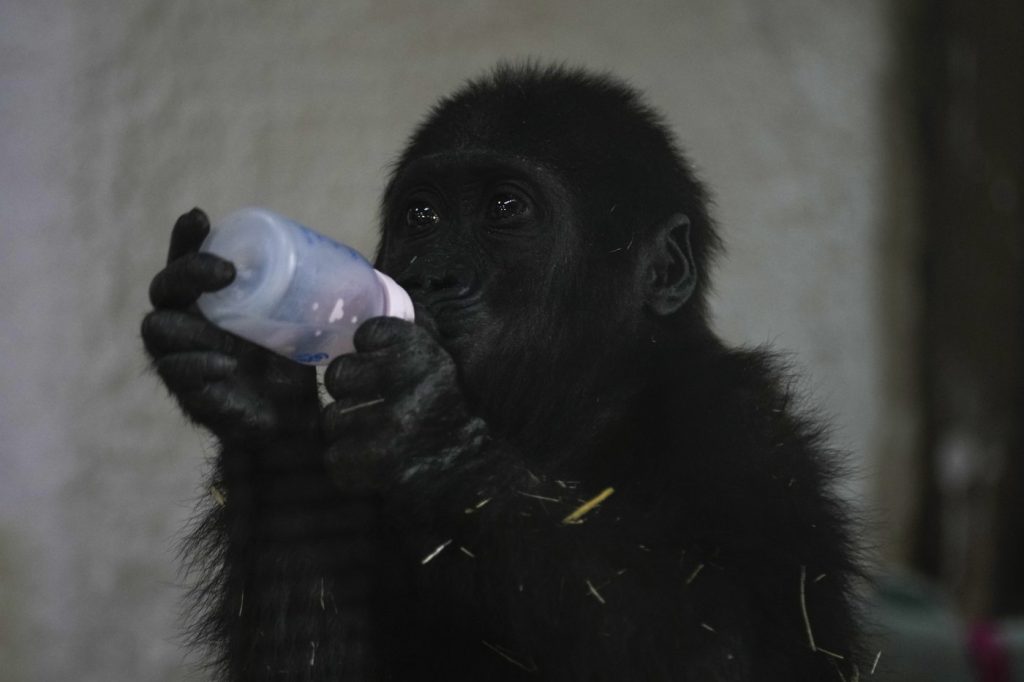ATOP LOOKOUT MOUNTAIN, Maine - The founder of Burt's Bees, Roxanne Quimby, originally aimed to create a tribute to the esteemed naturalist Henry David Thoreau when she began acquiring thousands of acres previously owned by logging companies. This land, which has now transformed into the Katahdin Woods and Waters National Monument, holds deep significance not only for conservation but also for the indigenous Wabanaki tribes, the original stewards of the land.
The new welcome center, known as “Tek?k?pim?k” (pronounced duh gah-gah bee mook) and meaning “as far as the eye can see” in the Penobscot language, opened on June 21. It was built with contributions from Roxanne Quimby’s family, other private donors, and federal authorities, totaling an investment of $35 million. The center serves as a central hub for the expansive 87,500-acre monument.
Located on Lookout Mountain, the Tek?k?pim?k structure features modern wood architecture and offers breathtaking views of Katahdin, a mountain of immense cultural significance to the Penobscot Nation, one of the four tribes in the Wabanaki Confederacy present in Maine. Jennifer Neptune, a Penobscot artist involved in the project, describes Katahdin as a “sacred mountain” and the "heart of our homeland."
Philanthropic funding primarily facilitated the monument’s construction and land acquisition, with contributions coming from notable entities like L.L. Bean and the National Park Foundation. Following the sale of Burt's Bees, Roxanne Quimby refocused her efforts on philanthropy and land preservation.
The center is situated off the grid and accessible only via unpaved roads. It features an amphitheater and an eastward lookout suitable for sunrise ceremonies led by the Maliseet, Mi’kmaq, Passamaquoddy, and Penobscot tribes, collectively known as the "people of the dawn." The structure not only provides a vantage point over land traversed by the tribes for centuries but also faces Katahdin, which rises 5,269 feet (1,606 meters) as Maine's tallest peak.
The exhibits within the welcome center highlight important aspects of Wabanaki culture, including birch bark canoes, indigenous fishing methods, the night sky, and local wildlife, complemented by translations in Wabanaki languages. Additionally, intricate maps of the tributaries feeding into the Penobscot River are illustrated in the floor tiles.
The opening of the center occurs amid the Trump administration's stance against diversity and inclusion initiatives, which has raised concerns about the future representation of Native American narratives. However, a formal management agreement between federal authorities and the tribal nations is believed to safeguard the center's focus on the indigenous communities that have historically governed these lands, as indicated by Lucas St. Clair, Roxanne Quimby's son.
Initially, Quimby bought the land in the 1990s driven by her admiration for Thoreau, particularly inspired by his travels chronicled in the 1857 work "The Maine Woods.” Over time, however, a shift in focus emerged when St. Clair joined tribal leaders in retracing Thoreau’s travels during the 150th anniversary of his book, realizing that the narrative encompassed richer stories than Thoreau's alone.
A pivotal moment occurred when a tribal leader noted the absence of indigenous representation during a celebration of the land's designation as a national monument. This experience highlighted a significant cultural oversight, prompting deeper engagement with the tribes throughout the design process of the welcome center.
Tribal representatives voiced concerns that an initial design for the center resembled colonial structures, leading to a revised design created in collaboration with an expanded tribal advisory board, drawing inspiration from tribal stories. James Francis, the Penobscot Nation’s tribal historian, hopes this collaboration will serve as a model for future projects encompassing Native American perspectives.
Roxanne Quimby affirmed that discussions with tribal members greatly enriched the project, stating that their contributions were invaluable. Thoreau, who once acknowledged the importance of Native languages in revealing new perspectives on life, would likely appreciate the efforts made to conserve land for future generations, according to Will Shafroth, former president of the National Park Foundation.










